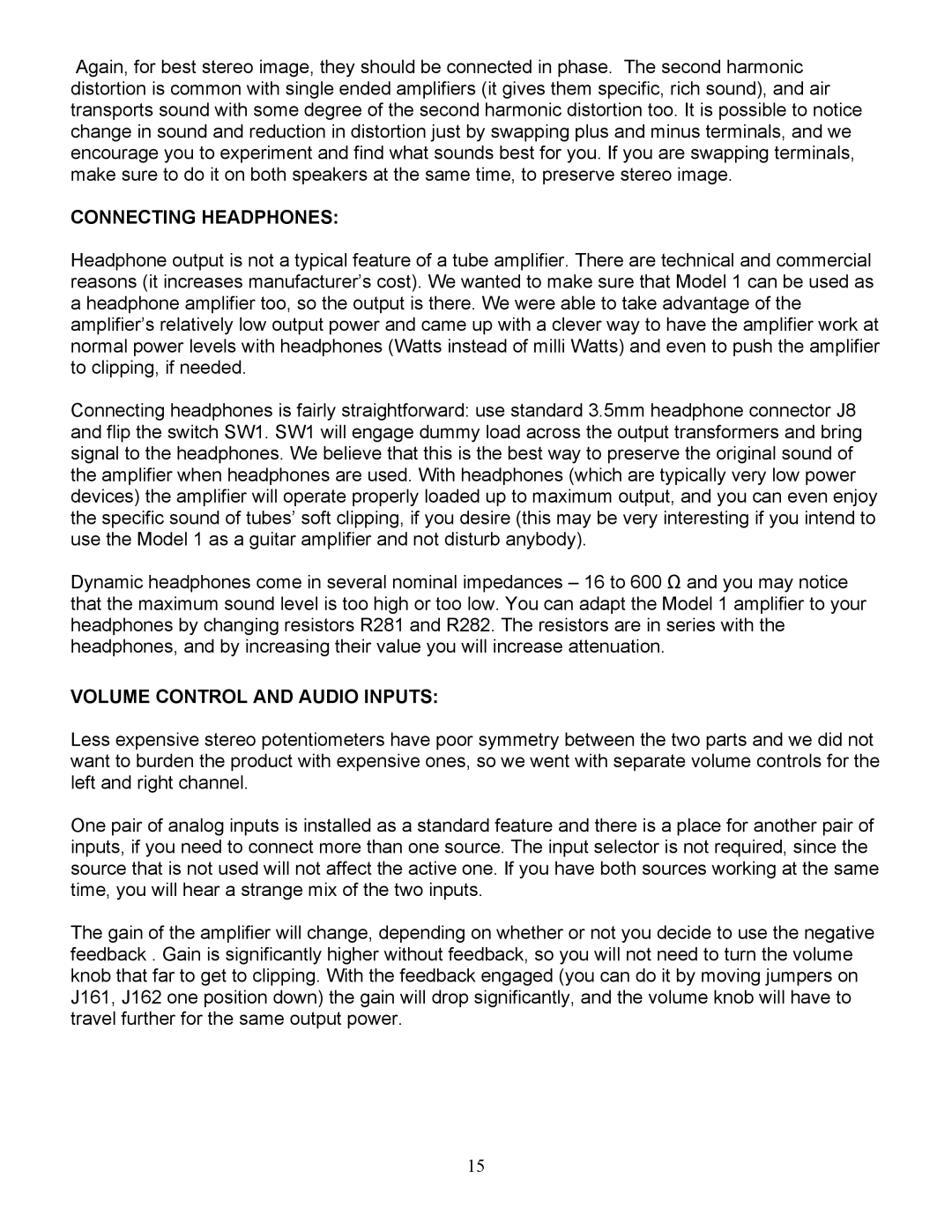Again, for best stereo image, they should be connected in phase. The second harmonic distortion is common with single ended amplifiers (it gives them specific, rich sound), and air transports sound with some degree of the second harmonic distortion too. It is possible to notice change in sound and reduction in distortion just by swapping plus and minus terminals, and we encourage you to experiment and find what sounds best for you. If you are swapping terminals, make sure to do it on both speakers at the same time, to preserve stereo image.
CONNECTING HEADPHONES:
Headphone output is not a typical feature of a tube amplifier. There are technical and commercial reasons (it increases manufacturer’s cost). We wanted to make sure that Model 1 can be used as a headphone amplifier too, so the output is there. We were able to take advantage of the amplifier’s relatively low output power and came up with a clever way to have the amplifier work at normal power levels with headphones (Watts instead of milli Watts) and even to push the amplifier to clipping, if needed.
Connecting headphones is fairly straightforward: use standard 3.5mm headphone connector J8 and flip the switch SW1. SW1 will engage dummy load across the output transformers and bring signal to the headphones. We believe that this is the best way to preserve the original sound of the amplifier when headphones are used. With headphones (which are typically very low power devices) the amplifier will operate properly loaded up to maximum output, and you can even enjoy the specific sound of tubes’ soft clipping, if you desire (this may be very interesting if you intend to use the Model 1 as a guitar amplifier and not disturb anybody).
Dynamic headphones come in several nominal impedances – 16 to 600 Ω and you may notice that the maximum sound level is too high or too low. You can adapt the Model 1 amplifier to your headphones by changing resistors R281 and R282. The resistors are in series with the headphones, and by increasing their value you will increase attenuation.
VOLUME CONTROL AND AUDIO INPUTS:
Less expensive stereo potentiometers have poor symmetry between the two parts and we did not want to burden the product with expensive ones, so we went with separate volume controls for the left and right channel.
One pair of analog inputs is installed as a standard feature and there is a place for another pair of inputs, if you need to connect more than one source. The input selector is not required, since the source that is not used will not affect the active one. If you have both sources working at the same time, you will hear a strange mix of the two inputs.
The gain of the amplifier will change, depending on whether or not you decide to use the negative feedback . Gain is significantly higher without feedback, so you will not need to turn the volume knob that far to get to clipping. With the feedback engaged (you can do it by moving jumpers on J161, J162 one position down) the gain will drop significantly, and the volume knob will have to travel further for the same output power.
15
